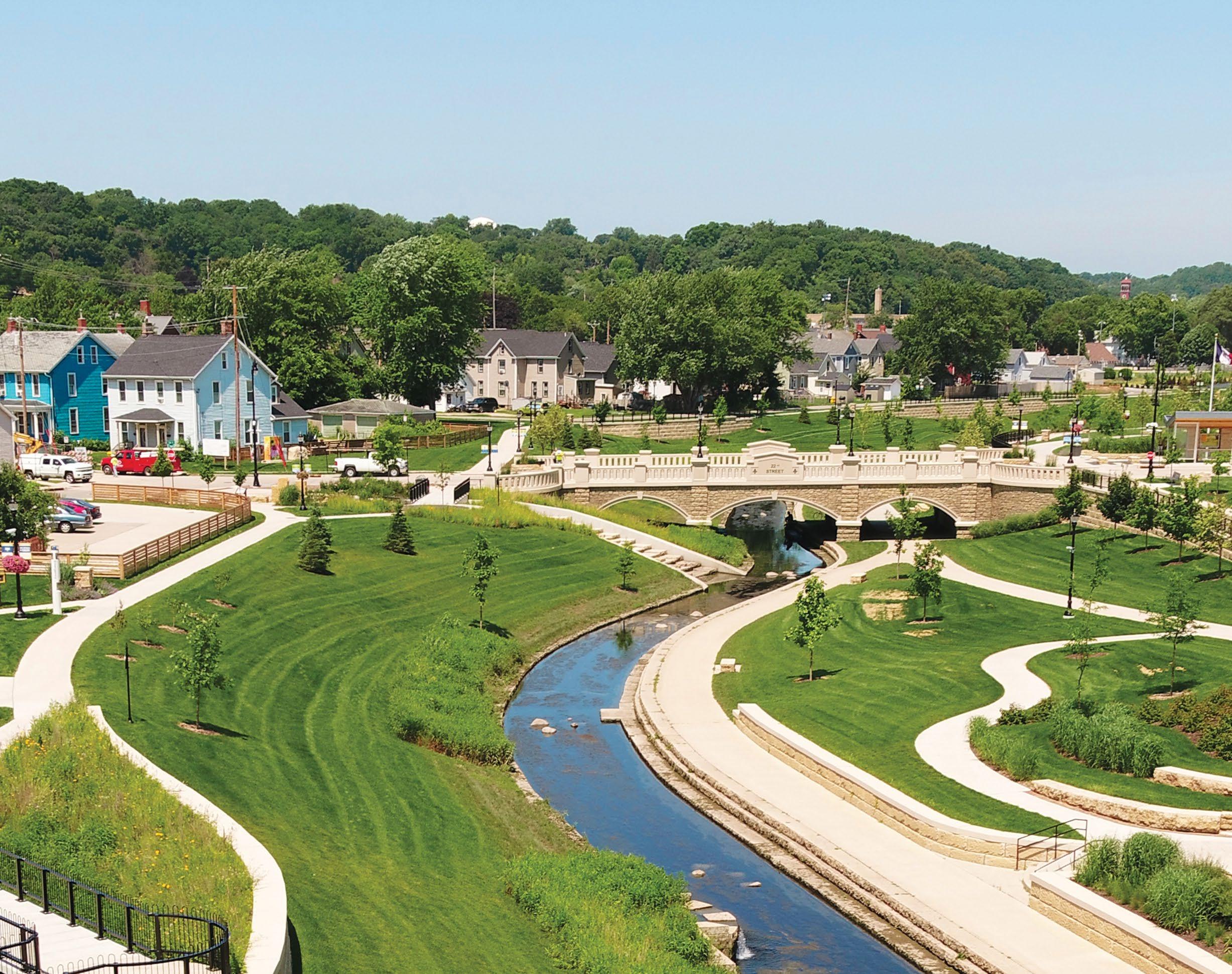
4 minute read
Sustainable Environment
Dubuque has always been closely tied to its bluffs, rolling hills, prairies, and waterways. In 2006, the City of Dubuque made a strong commitment to its environment through the Sustainable Dubuque Plan, which is a key component to the Imagine Dubuque Comprehensive Plan and compliments the City’s Climate Action Plan designed to reduce greenhouse gases 50 percent by 2030. This effort was led by the Resilient Community Advisory Commission and the City’s Sustainability Coordinator. These plans provide our city with measures to address our changing climate and build a sustainable and resilient community surrounding our environment.
We believe that out of great challenges, we can create great opportunities.
Advertisement
The Bee Branch Watershed encompasses historic neighborhoods offering the community’s most affordable housing. This area is also hit the hardest by flash flooding during significant rain events. Between 1999 and 2011, six Presidential Disaster Declarations were issued with total damage estimates of almost $70 million. After years of study and planning, the City embarked upon a course of action to prevent devastating flash floods from happening again in the Bee Branch Watershed.
Recommended by residents and designed with their input, the Bee Branch Creek Restoration involved replacing almost one mile of storm sewer with a daylighted creek and floodplain to protect almost 1,400 homes and businesses from future flooding. The restored creek and floodplain, now called the Bee Branch Creek Greenway, takes on stormwater during rain events and moves it safely to the Mississippi River without flooding adjacent properties.
The greenway also serves as a beautiful linear parkway. Amenities stretch from the heart of Dubuque to the Mississippi River including a multi-use trail, scenic overlooks, an outdoor amphitheater, benches, lighting, rest areas, a community garden and urban orchard, and a play area with slides.
In the summer of 2017, 4.9 inches of rain fell in less than 24 hours in Dubuque. With the completed creek, property damage was largely avoided. In 2002, there had been a similar storm with 4.9 inches of rain in 24 hours that resulted in $11.6 million in property damage. Although every rain event is unique, it can be estimated that without the restored creek, the 4.9-inch rainstorm would have caused significant property damage.
The recently completed Bee Branch Creek Railroad Culverts Project is the final piece of the creek restoration. The addition of underground stormwater transition structures and six, 8-foot diameter culverts under the Canadian Pacific Railway tracks allows stormwater to drain more efficiently from the upper portion of the Bee Branch Creek to the lower. These improvements have increased the flood mitigation system’s capacity to protect the area from a 75-year rain event to a 500-year rain event.
The $126 million Bee Branch Creek Restoration Project was funded through a combination of General Obligation Bonds, State Revolving Loan Funds (SRF), grants totaling over $64 million, generous contributions from local businesses, organizations, and citizens, and City of Dubuque stormwater utility fee revenue. It is anticipated that the Bee Branch Watershed Flood Mitigation Project will prevent an estimated $582 million in damages over the 100-year design life of the project.
The Bee Branch Creek Restoration is innovative. Most communities see flooding as strictly stormwater management, and remediate through conveyance, detention, and levees. That approach does not address water quality, preservation of neighborhoods, and community development. It is important to think beyond traditional flooding fixes and invest in replicable solutions developed with resident input. Dubuque could have constructed a concrete ditch or multiple storm sewers. Instead, Dubuque residents and project partners embraced the Sustainable Dubuque framework to restore the Bee Branch Creek.
Scan to watch a short video on the history of the Bee Branch Creek Restoration

The sustainable environment category of the Imagine Dubuque Plan seeks to protect and preserve Dubuque’s environment and natural resources through 11 recommendations across five sub-categories: clean water, clean air and energy, neighborhoods, land conservation, and eco-education. The chart below highlights the status of the 11 recommendations.
Ready to get involved?
Contact the Sustainable Environment Connector:
Gina Bell | Sustainable Communities Coordinator 563.690.6038 | gbell@cityofdubuque.org










